Several varieties of palm trees likely suffered damage in the Big Freeze of ‘21. Some may recover, and some may not. Here are some things you can look for and steps you can take right now.
Our first reaction to make it all better is to water our grass and plants. Do not water unless the ground is close to dry. Watering damaged plants will encourage fungal and bacterial growth, which we want to avoid. Stick your finger in the soil and check for moisture. If it is moist, do not water yet.
You can mow your grass if it is taller and needs to be mowed. Place your mower setting one setting lower; do not cut too short. Cutting too short will add stress to grass that’s already stressed from the freeze.
Do not fertilize your lawn until it is greened up and actively growing. That is when the grass can best absorb the fertilizer in its roots and benefit from the nutrients.
Start removing the dead/damaged portion on your plants. Some examples below are:
- If the plant is mushy (tropicals like ginger, Moses in the boat, bird of paradise) trim back to firm stem or to ground. Watch video: “Freeze Remedy: Initial Assessments”
- Plants like salvia, plumbago, firecracker plant, and flax lily, trim down to within 4” from ground.
- Plants like ixora, duranta, schefflera, hibiscus, and bougainvillea: scratch trunk and trim back to where you see green in the cambium layer of the trunk (maybe to ground).
- Philodendron – Watch video: “Freeze Remedy: How To Save Philodendrons”
- Palms – Watch video: “Freeze Remedy: Palm Trees”
- Citrus– if you scratch a branch and there is no green underneath you can remove it, but no hurry. Keep any suckers that arise from below the graft cut off, they will grow fast but produce sour fruit. If your tree is frozen all the way to the graft, fertilize with Citrus Tone now, May 1st, and September 15th to promote plenty of healthy regrowth from freeze damage.
We know it looks bad but we are here to help you get your landscape back as best we can. We are bringing in new, healthy plants from California, Florida and all over Texas. Our Texas growers learned from the 80’s freezes how to protect plants.
Thank you for your questions on our website, Facebook, Instagram, on the phone, and in person! We will continue creating videos as we see the need and as always, we’re open 7 days a week to help you with your garden!
Many citrus trees around the Coastal Bend appear damaged after Winter Storm Uri. For citrus trees you want to try and save, the best thing to do right now is wait and see. Some may be goners, some may bounce back, and others may have delayed effects from the freeze. It may still be weeks or months before we know for sure. If you want to go ahead and replace or plant new citrus trees, now’s the best time – check out Josh’s how-to video below.
We are happy to present this video in collaboration with Grow Local South Texas!
Since the freeze, we’ve all been busy cleaning up, waiting for some plants to recover, AND lots of new planting. We thought it would be helpful to go over some basic planting tips to be sure your plants get off to a strong start.
It’s been five weeks since the big freeze. As my yoga instructor, Gretchen Weber, said so well last night, the first few weeks was about mourning. Mourning the loss of big, beautiful, tropical plants that have abounded in our warmer-than-normal winters.
Now we’re all in the recovery mode. Some have been quicker on the draw than others. Some want to just get their garden back to where it was as quickly as possible. For others, now may be a great time to rethink your garden. What do you want going forward?
Do you want your landscape beds wider so they will accommodate the natural growth of plants without constant shearing? Or smaller beds with more grass or rock?
Do you want a compost bin in a spot where a big overgrown shrub once was, a compost bin that will help you constantly enrich your soil?
Do you want to have more plants that feed the birds and butterflies? Yesterday, I visited with Dr. Dale Gawlik, Endowed Chair for Conservation and Biodiversity, Harte Research Institute for Gulf of Mexico Studies. He moved from Florida into a home on Padre Island that had many ornamental plants that died in the freeze. Instead of replacing with the same, he is going back with only plants that provide habitat and food for birds and butterflies.
Do you want plants that stay lower to show off more of your house from the outside? Or plants that grow up and frame your views from the inside?
Do you want to change your color palette (another Gretchen comment last night)?
Do you want less of your landscape to be tropical so in the next freeze you don’t lose as much? Now’s a good time to drive around and see what plants flourished in the cold temperatures.
Take your time. Look through magazines and make Pinterest boards. Stroll our garden center and others. Our growers are ramping up to supply us more plants and greater variety than ever. Enjoy the process and always remember, we’re here to help you.
-Sally Gill
We’re starting to see hummingbirds make their way through for the Spring migration! These tiny birds are BIG eaters. They need to feed several times an hour and consume half their body weight in food each day. The February freeze damaged a large amount of the hummingbird’s food source, and the plants that are coming back are coming into bloom later than normal. This makes it hard for birds to find the food they need to continue to migrate.
The good news is…humans can help! While you’re replacing plants and revamping areas this Spring, consider plants that look great and provide lots of nectar for hummingbirds to feed on. Our favs for South Texas are Firecracker Plant (aka Cuphea), Salvias (like Salvia greggii and Salvia leucantha), and Cape Honeysuckle.
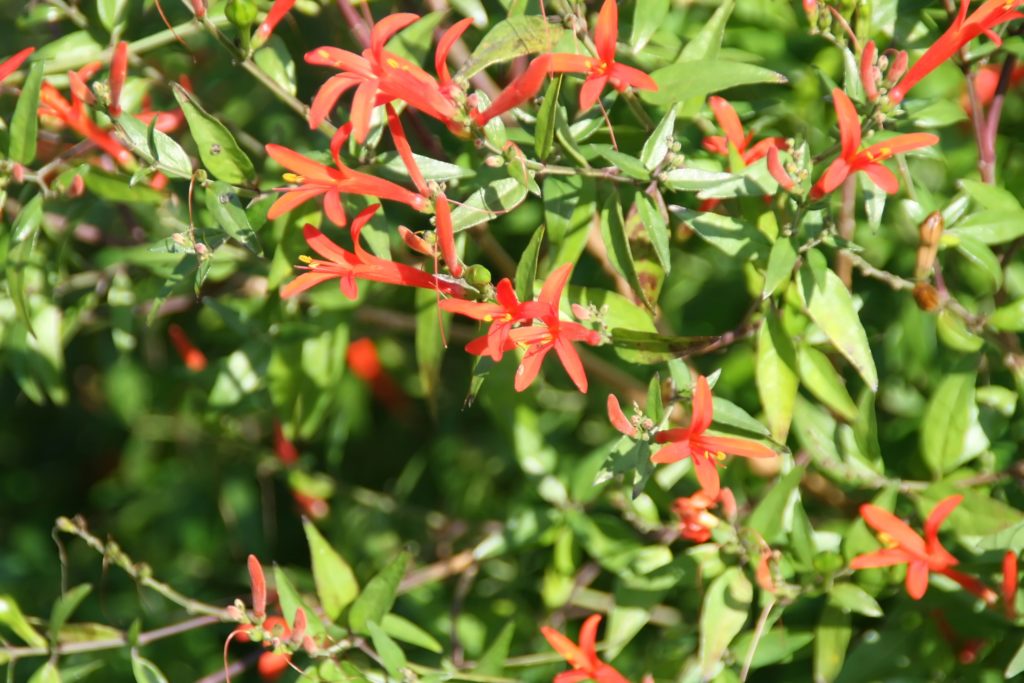
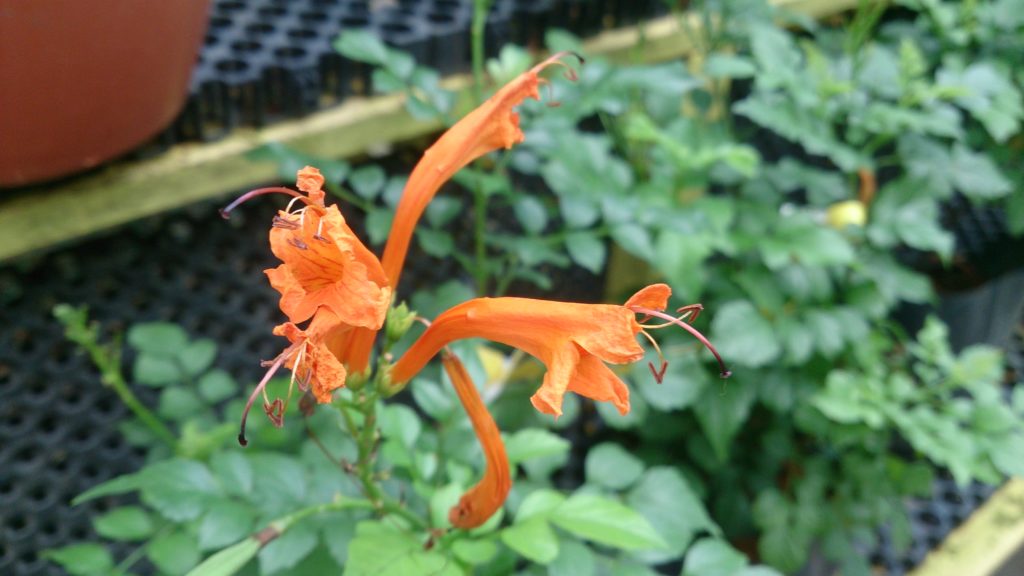
You can supplement those hummingbird plants with some feeders. Fill your feeders with 1 part sugar + 4 parts water and be sure to change water every 3-4 days this Spring and every 2-3 days in the Summer.

-Wyatt
Just like us, plants can’t live on water alone. To thrive, plants must have food, especially in Spring when they are actively growing. Rather than try to carry every fertilizer imaginable (there are hundreds!), we focus on the ones that we can really stand behind. Here is our menu of favorite plant foods, tested and used by the pros here at Gill’s.
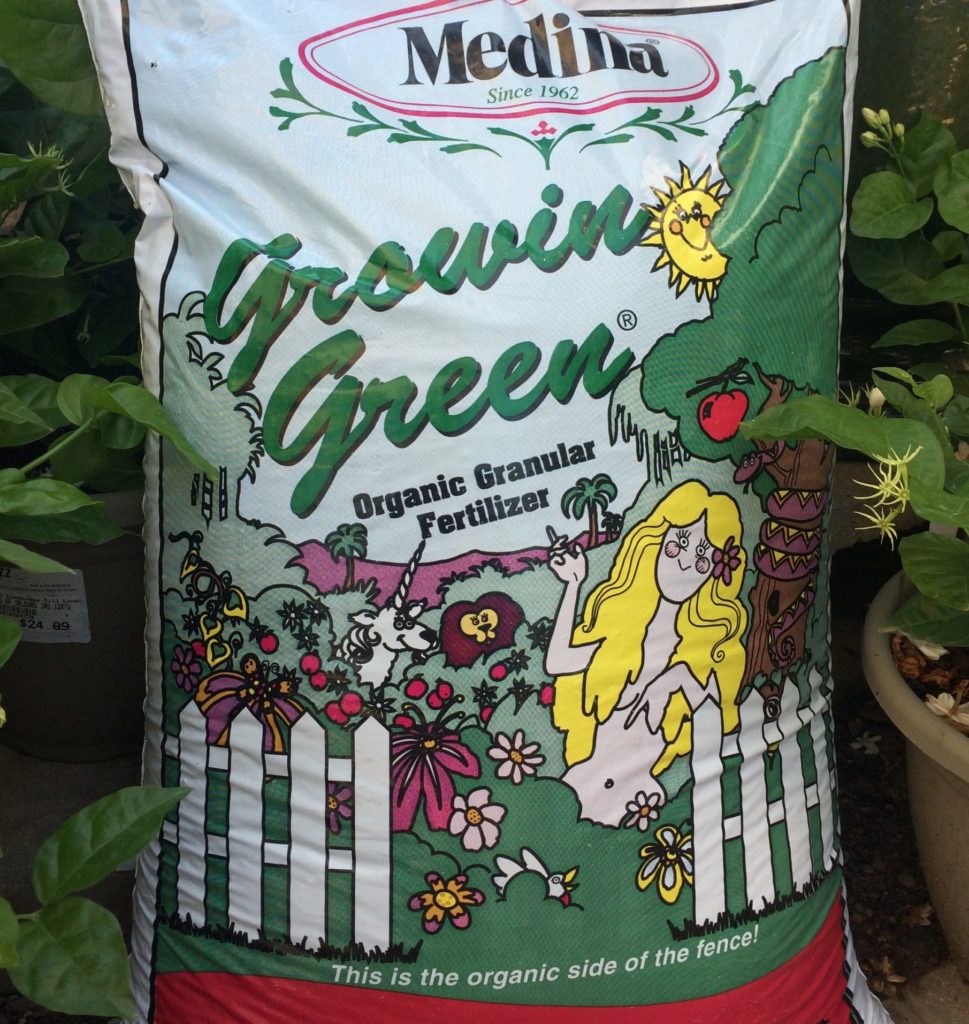
Medina Growin’ Green
Our most versatile plant food. Organic and great for lawns, trees, shrubs, veggies, flowers, potted plants, you name it! Use a spreader to spread over your lawn. Each bag covers 3,000 sq. ft. Or sprinkle a small handful of granules on the soil around your plants, then water it in well.
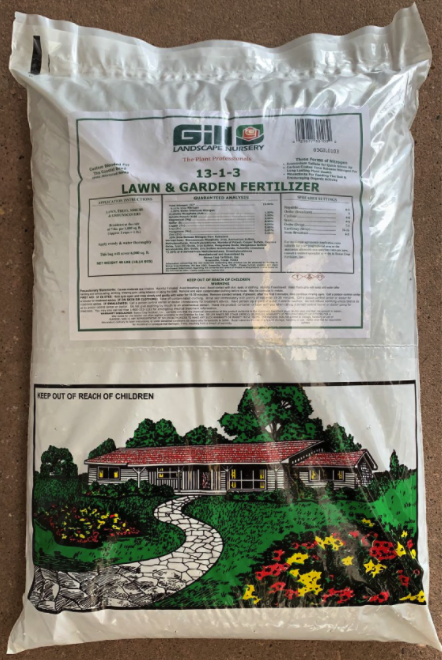
Gill Lawn and Garden Food
Back in the 80s, James worked with Texas A&M to create a fertilizer formulated specially for South Texas lawns and gardens. It’s been a fav ever since. Each bag covers 6,000 sq. ft. of lawn. Or broadcast under trees and shrubs and water in well.

HastaGro
Another amazing organic food. Also very versatile. Mix the liquid with water (or use the hose-end sprayer) and use almost everywhere. Great for veggie gardens, blooming plants, succulents and more. HastaGro provides excellent nutrients for houseplants and none of the smell! You may not want to bring stinky granular plant food inside the house 🙂
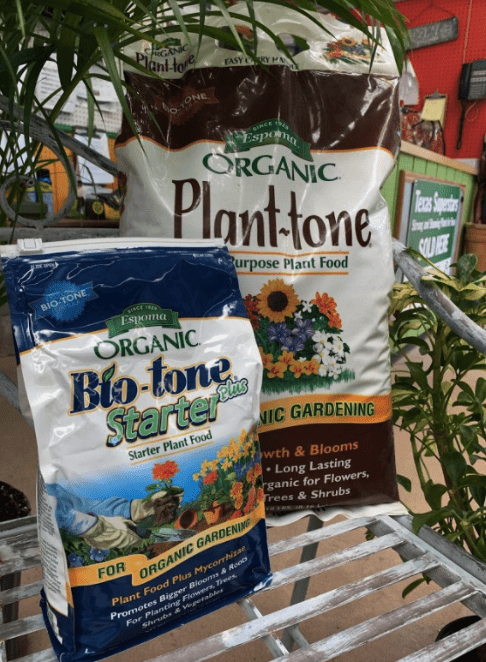
Espoma “Tone” Foods
We love organic foods by Espoma. BioTone starter fertilizer with beneficial microbes is great to use at planting time to stimulate root growth. PlantTone is an excellent granular for veggies and flowering plants, CitrusTone is specifically formulated for citrus or other fruiting trees, and AzaleaTone for Azaleas, Magnolia, and Gardenias.
Pro tip: Fish Emulsion is another very popular and effective organic that works great for leafy veggies. Just be aware that cats go crazy for it too!
I think we all enjoy bird watching and even more this time of year with the variety of birds coming through. Just this week we’ve started to see Indigo and Painted Buntings, Scarlett Tanagers, and Warblers.
James had a very odd thing happen this past weekend. He was out surfing at Packery Channel and a Warbler dropped down and landed on his surfboard! James could tell the bird was very tired. James thinks he had been migrating over the Gulf of Mexico and probably happy to pause for a moment on the board. It was another reminder of how hungry and tired the migrating birds are.
We carry a select few bird feeders and bird seed products, including Wild Delights songbird food. What Gill’s has an abundance of is plants that support our bird population. Native plants provide nutrition in berries, good cover, and nesting material for the birds.
Here are a few of our favorites for attracting birds:
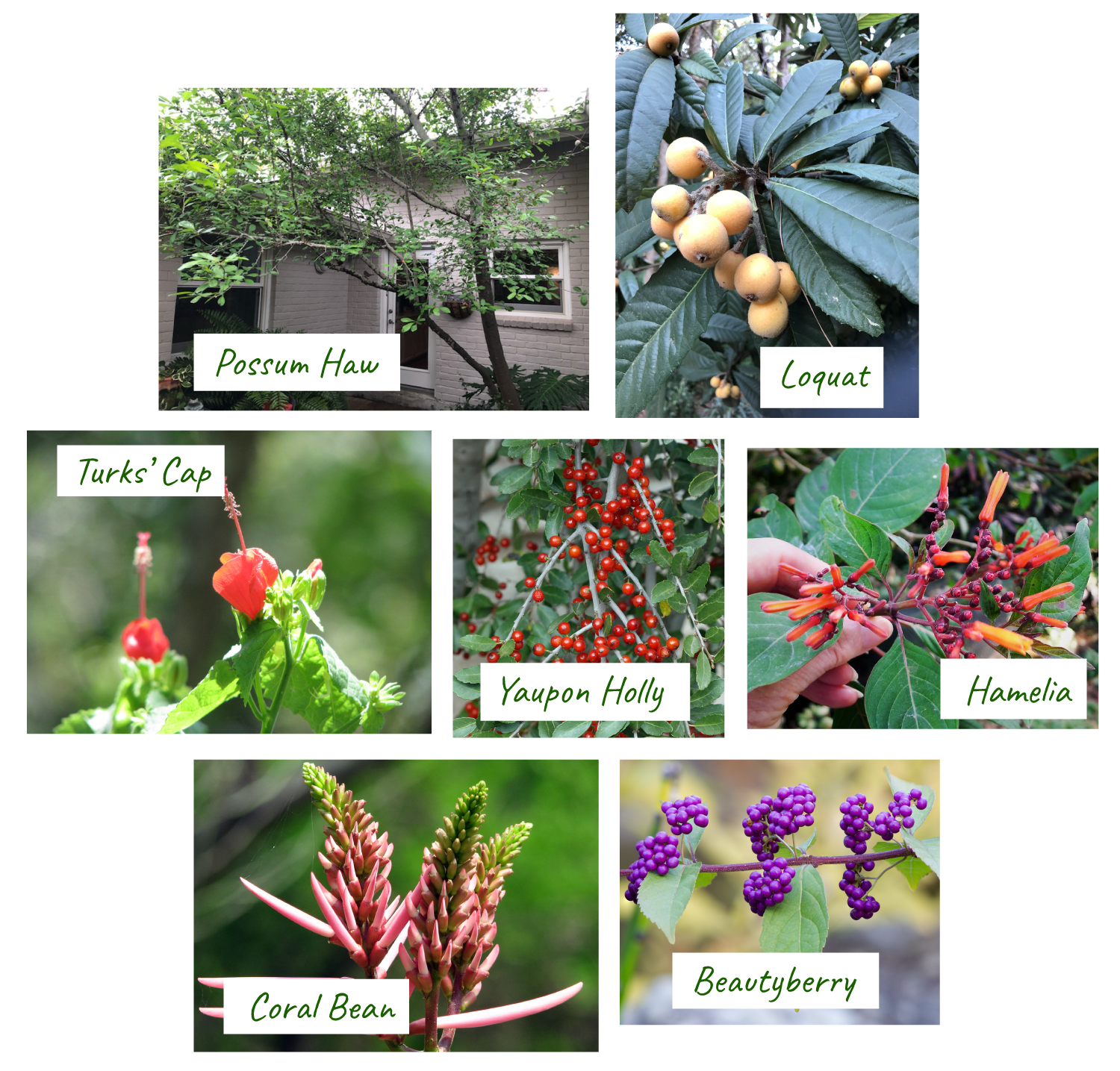
We love the beauty of these plants and are especially thankful for their value to our birds!

-Sally Gill
P.S. Along with the right plants, good to have a water source for the birds. It could be a birdbath, a clay saucer set on a brick or stone or even a fountain with moving water! ☺

